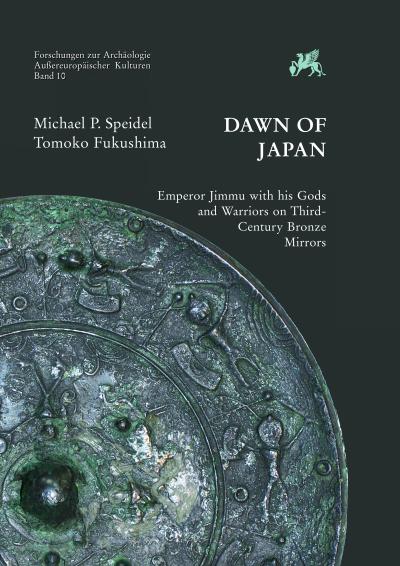Dawn of Japan: Emperor Jimmu with his gods and warriors on third-century bronze mirrors
https://doi.org/10.34780/a13t-adf9
Synopsis
Images of war dancers enliven the third-century Shuryo-mon kyo bronze mirror in the Tokyo National Museum.The dancers are celebrating the great "Eastern Campaign" of Jimmu Tenno, Japan's legendary first emperor, according to the authors' detailed analysis and archaeological documentation. The mirror's images match, point by point, Jimmu's victorious campaign as described in the eighth-century accounts of the Kojiki and Nihon shoki. It follows that, contrary to the prevailing view, the written legend too goes back to the actual historical events, and that Jimmu Tenno, the founder of Japan as a country and of its ruling dynasty, was a historical figure who lived in the later third century of our era. Other mirrors, paintings, and rock-carvings of the Kofun Period (250-600) also depict Jimmu's deeds and myths: The Goroyama paintings record Jimmu's victory at Tomi, the Takaida drawings his Yamato campaign, and the "Sea-Dance" mirrors reflect the help he got from the sea gods. Works of art of this period even portray Amaterasu as Jimmu's main goddess, they show Jimmu's journey as Hikohohodemi to the palace of the sea god, his woman-shaman Sarume, his Wani sea steed, and the monkey god Sarutahiko. Some hitherto missing parts of ancient Japanese myth are thereby recovered and for the first time early Shinto religion is richly illustrated. As for military history, these works of art offer wealth of information and illustration about Japanese warfare from a time long before that of the Samurai. Altogether, this study (120 pages, 47 figures in the text, 16 color plates) greatly contributes to our knowledge of Japanese history, art, and religion by revealing that the previously nebulous, legendary beginnings of Japan, are historical events, firmly set in time and place, and colorfully recorded by images from those times. Published by the German Archaeological Institute, this is a scholarly, archaeological work. It deliberately sidesteps the political issue, that nevertheless will arise: Jimmu Tenno is the idol of Japan's rightwingers. His rule was a point of faith until 1945, when he was "massacred."
Chapters
-
Preface
-
Introduction
-
1 The Mirror
-
2 The Mirror´s Tale Confirmed by Kofun Art
-
3 Sea-Dance Mirrors
-
4 Gods and Myths
-
5 Warriors
-
6 Jimmu, Founder of Japan
-
Conclusion
-
Chronology
-
Bibliography
-
List of Figures and Plates
-
Picture Credits
-
Index
-
Plates 1–17

